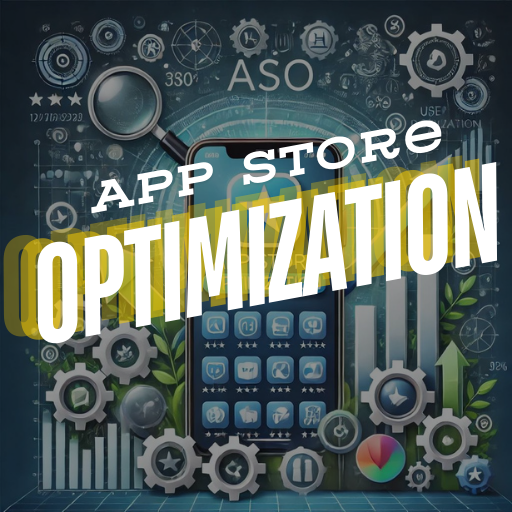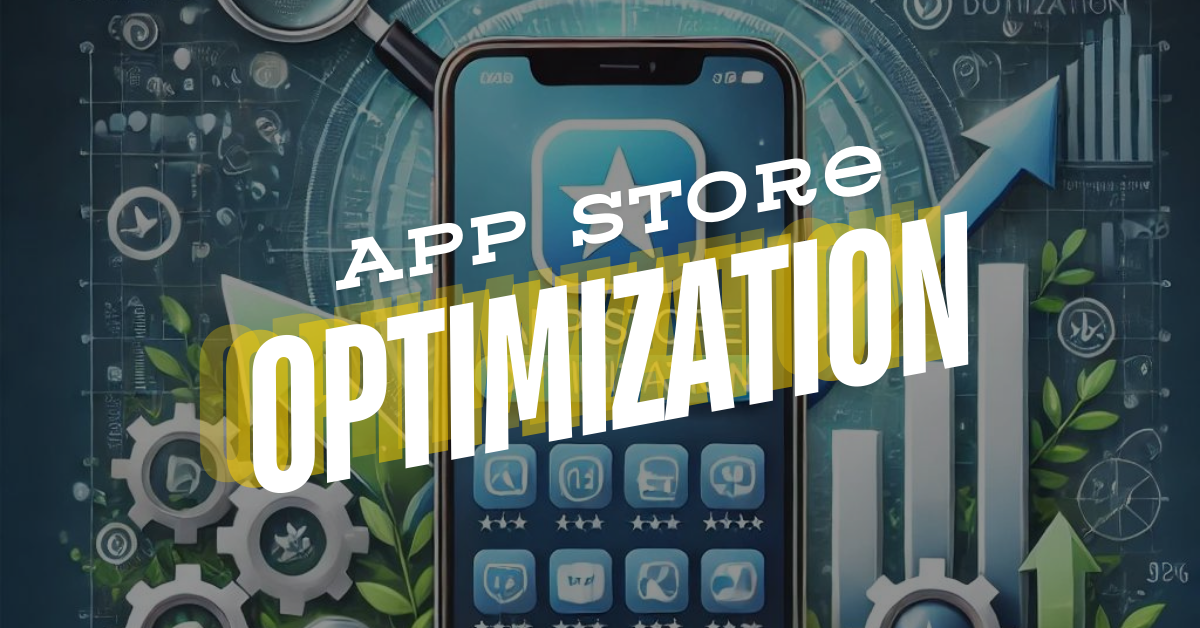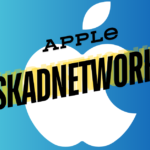
In the highly competitive landscape of mobile applications, standing out in the crowded app stores is paramount for success. App Store Optimization (ASO) is the strategic process that enhances your app’s visibility, drives more downloads, and improves user engagement.
As we navigate through 2024, ASO continues to evolve with new trends, technologies, and best practices. This comprehensive guide delves into everything you need to know about ASO in 2024 to ensure your app survives and thrives in the marketplace.
Table of Contents
- What is App Store Optimization (ASO)?
- Why ASO is Crucial in 2024
- Key Components of ASO
- Keyword Optimization
- App Title and Description
- App Icon and Screenshots
- App Reviews and Ratings
- Localization
- App Updates
- Latest Trends in ASO for 2024
- AI and Machine Learning Integration
- Video Previews and Interactive Media
- Voice Search Optimization
- Personalization and User Experience
- Privacy and Security Focus
- Effective ASO Strategies for 2024
- Comprehensive Competitive Analysis
- User Acquisition Funnels
- A/B Testing
- Leveraging Analytics and Data
- Top ASO Tools in 2024
- Keyword Research Tools
- Analytics and Tracking Tools
- A/B Testing Platforms
- Measuring ASO Success
- Key Metrics to Track
- Tracking and Reporting
- Best Practices and Tips
- Common ASO Mistakes to Avoid
- The Future of ASO
- Conclusion
What is App Store Optimization (ASO)?
App Store Optimization (ASO) is improving the visibility and appeal of a mobile application within app stores like Apple’s App Store and Google Play Store. The primary goal of ASO is to increase an app’s organic downloads by enhancing its ranking in app store search results and featuring it in top charts. ASO encompasses various elements, including keyword optimization, creative assets, user reviews, and more, all aimed at making the app more discoverable and enticing to potential users.
Why ASO is Crucial in 2024
With millions of apps available across major app stores, organic discovery is more challenging than ever. ASO plays a pivotal role in:
- Increasing Visibility: Enhancing your app’s ranking for relevant search terms.
- Boosting Downloads: Attracting more users through compelling visuals and descriptions.
- Improving User Engagement: Ensuring users find and download an app that meets their needs.
- Cost-Effective Marketing: Relying on organic growth rather than expensive paid advertising.
In 2024, as app stores continue to evolve with new features and algorithms, staying updated with the latest ASO strategies is essential for maintaining and improving your app’s presence.
Key Components of ASO
Successful ASO hinges on optimizing several key components. Understanding and effectively managing these elements can significantly enhance your app’s performance in app stores.
Keyword Optimization
Keyword optimization involves researching and selecting the most relevant and high-traffic keywords that potential users might use to find apps like yours. Key aspects include:
- Keyword Research: Utilize ASO tools to identify popular and relevant keywords.
- Relevance: Ensure keywords accurately represent your app’s functionality and purpose.
- Competition Analysis: Balance between high-traffic and low-competition keywords.
- Keyword Placement: Incorporate keywords naturally into the app title, subtitle, and description.
App Title and Description
Your app’s title and description are critical for both SEO and user conversion.
- App Title: Should be concise, include primary keywords, and clearly convey the app’s purpose.
- Subtitle (iOS): An opportunity to include additional keywords and provide more context.
- App Description: Should highlight key features, benefits, and unique selling points. Incorporate keywords seamlessly without keyword stuffing.
- Formatting: Use bullet points, short paragraphs, and clear headings to enhance readability.
App Icon and Screenshots
Visual elements significantly influence a user’s decision to download an app.
- App Icon: Must be unique, visually appealing, and reflective of the app’s purpose. It should stand out in the app store.
- Screenshots: Showcase the app’s key features and user interface. Use high-quality images with annotations or captions to guide potential users.
- App Preview Video: A short video demonstrating the app’s functionality can boost conversion rates.
App Reviews and Ratings
User feedback is a powerful trust signal for potential users.
- Encourage Positive Reviews: Prompt satisfied users to leave reviews. Implement in-app prompts at appropriate times.
- Respond to Reviews: Engage with users by addressing their feedback, which can improve user satisfaction and retention.
- Manage Negative Reviews: Address issues raised in negative reviews to demonstrate commitment to improvement.
Localization
Adapting your app’s listing to different languages and regions can expand your reach.
- Translate App Metadata: Ensure titles, descriptions, and keywords are accurately translated.
- Cultural Adaptation: Modify visuals and content to resonate with local audiences.
- Local Keywords: Research and incorporate region-specific keywords.
App Updates
Regular updates signal to both app stores and users that your app is maintained and improved.
- Changelog: Communicate what’s new or improved in each update.
- Bug Fixes and Enhancements: Address user feedback and fix issues promptly.
- Feature Additions: Introduce new functionalities to keep the app relevant and engaging.
Latest Trends in ASO for 2024
ASO is continually evolving, with new trends shaping how developers optimize their apps. Staying ahead of these trends can provide a competitive edge.
AI and Machine Learning Integration
Artificial Intelligence (AI) and Machine Learning (ML) are transforming ASO by:
- Predictive Analytics: Forecasting trends and user behavior to inform ASO strategies.
- Automated Keyword Suggestions: AI-driven tools can suggest optimal keywords based on vast datasets.
- Personalized Recommendations: Tailoring app store listings to individual user preferences and behaviors.
Video Previews and Interactive Media
Visual storytelling is becoming more sophisticated:
- Enhanced Video Previews: Short, engaging videos that highlight key features and user experience.
- Interactive Previews: Allow users to interact with app elements before downloading, increasing engagement.
Voice Search Optimization
With the rise of voice assistants, optimizing for voice search is crucial:
- Natural Language Keywords: Incorporate conversational phrases and questions.
- Featured Snippets: Aim to have your app appear in voice assistant answers by providing clear and concise information.
Personalization and User Experience
Delivering a personalized experience can significantly impact user acquisition and retention:
- Dynamic Content: Adjust app store content based on user location, preferences, and behavior.
- Customized Recommendations: Use data to suggest relevant features or content to potential users.
Privacy and Security Focus
With increasing concerns about data privacy:
- Transparent Privacy Policies: Clearly communicate how user data is handled.
- Security Features: Highlight security measures within the app to build trust.
Effective ASO Strategies for 2024
Implementing effective ASO strategies tailored to current trends ensures sustained growth and visibility.
Comprehensive Competitive Analysis
Understanding your competitors is essential for positioning your app effectively.
- Identify Top Competitors: Analyze apps with similar functionalities and target audiences.
- Benchmarking: Compare key metrics such as downloads, ratings, keywords, and visual elements.
- Gap Analysis: Identify opportunities where competitors are lacking and capitalize on them.
User Acquisition Funnels
Optimizing the user journey from discovery to download enhances conversion rates.
- Awareness: Ensure high visibility through effective keyword and visual optimization.
- Consideration: Provide compelling descriptions and visuals that resonate with user needs.
- Conversion: Simplify the download process and highlight incentives for users to install.
A/B Testing
Continuous experimentation through A/B testing helps identify what resonates best with your audience.
- Test Variables: Experiment with different app titles, descriptions, icons, screenshots, and videos.
- Analyze Results: Use statistical analysis to determine the most effective variations.
- Iterate: Implement successful changes and continuously test new hypotheses.
Leveraging Analytics and Data
Data-driven decisions are fundamental to successful ASO.
- Track Performance: Monitor key metrics such as rankings, downloads, user engagement, and conversion rates.
- User Behavior Analysis: Understand how users interact with your app store listing.
- Adjust Strategies: Use insights from data to refine and optimize ASO tactics.
Top ASO Tools in 2024
Leveraging the right tools can streamline your ASO efforts and provide valuable insights.
Keyword Research Tools
- Sensor Tower: Offers comprehensive keyword research, competitor analysis, and trend tracking.
- App Annie: Provides keyword rankings, search trends, and market data.
- Mobile Action: Features keyword tracking, optimization suggestions, and competitive intelligence.
Analytics and Tracking Tools
- Google Analytics for Firebase: Tracks user engagement, retention, and in-app behavior.
- Appfigures: Monitors app performance metrics, reviews, and rankings across multiple stores.
- Mixpanel: Provides detailed user analytics and event tracking.
A/B Testing Platforms
- SplitMetrics: Specializes in app store A/B testing for titles, icons, screenshots, and more.
- StoreMaven: Offers robust A/B testing features with detailed reporting and analytics.
- Apptimize: Integrates A/B testing into mobile app environments for in-app optimizations.
Attribution Tools
Here are some of the top attribution tools for mobile marketing that are essential for tracking user activity, measuring campaign performance, and optimizing mobile ad spend:
1. Adjust
- Overview: Adjust is a leading mobile attribution and analytics platform that helps marketers measure the performance of their campaigns and optimize user acquisition efforts.
- Key Features:
- Cross-channel attribution tracking
- Fraud prevention suite
- In-app analytics and cohort analysis
- Audience segmentation for retargeting
- Custom deep linking and app store optimization tools
- Why It’s Great: Adjust is known for its robust fraud prevention system and user-friendly interface, making it a preferred tool for marketers looking to safeguard their ad budgets.
2. AppsFlyer
- Overview: AppsFlyer is a widely used mobile attribution and marketing analytics platform known for its versatility and comprehensive tracking capabilities.
- Key Features:
- Accurate attribution across various channels and networks
- Deep linking and retargeting solutions
- SKAdNetwork support for iOS 14+ privacy changes
- Fraud protection suite (Protect360)
- Custom dashboards for data analysis and visualization
- Why It’s Great: With strong integrations across ad networks and platforms, AppsFlyer offers a holistic approach to mobile attribution, making it a top choice for app developers and marketers.
3. Branch
- Overview: Branch is a mobile linking platform focused on deep linking and attribution, offering seamless user experiences across multiple devices and platforms.
- Key Features:
- Deep linking and deferred deep linking for personalized onboarding
- Cross-platform attribution (web to app, app to app)
- Measurement of organic and paid campaigns
- Integration with multiple ad networks and analytics tools
- Comprehensive reporting on user journeys
- Why It’s Great: Branch excels at providing a consistent and smooth user experience through powerful deep linking, ensuring proper attribution for all campaigns.
4. Singular
- Overview: Singular is a data analytics and mobile attribution platform that provides marketers with a unified view of their marketing performance across channels.
- Key Features:
- Single source of truth for attribution data
- Multi-channel and multi-touch attribution models
- Customizable dashboards for deep insights
- Fraud detection and prevention tools
- Real-time reporting for performance monitoring
- Why It’s Great: Singular offers an integrated platform that merges attribution with analytics, giving marketers a comprehensive understanding of their mobile marketing efforts.
5. Kochava
- Overview: Kochava is a leading mobile attribution platform that provides real-time data on app user acquisition, engagement, and lifetime value.
- Key Features:
- Multi-channel attribution and deep linking
- Campaign optimization and measurement tools
- Fraud prevention suite
- Audience segmentation and push notification integration
- Real-time data analytics and visualization
- Why It’s Great: Kochava is highly customizable and caters to enterprise-level clients, providing in-depth analytics and tracking for complex mobile campaigns.
6. Tenjin
- Overview: Tenjin is a mobile marketing platform designed for app developers, especially those focused on mobile games, offering detailed insights into user acquisition and monetization.
- Key Features:
- Full-stack solution for mobile marketing analytics
- Attribution tracking across networks
- In-depth revenue and monetization reporting
- Data warehousing for raw data access
- Lightweight SDK for easy integration
- Why It’s Great: Tenjin stands out for its specialized focus on gaming apps, providing game developers with insights into both user acquisition and in-app monetization.
7. Tune
- Overview: Tune is a mobile marketing platform that helps marketers attribute, analyze, and optimize their mobile campaigns across multiple channels.
- Key Features:
- Cross-channel attribution and analytics
- Real-time campaign tracking and optimization
- Fraud detection and prevention
- Deep linking and personalized user experiences
- Advanced reporting and data segmentation
- Why It’s Great: Tune provides marketers with deep insights into campaign performance, making it ideal for those managing multiple marketing channels and ad networks.
8. Airbridge
- Overview: Airbridge is an emerging mobile attribution platform focused on providing accurate, privacy-centric attribution solutions.
- Key Features:
- Comprehensive tracking for mobile app installs and events
- SKAdNetwork support for iOS 14+ privacy changes
- Cross-platform attribution (mobile web, mobile app)
- Privacy-centric and GDPR compliant
- Real-time reporting and fraud detection
- Why It’s Great: Airbridge emphasizes privacy while delivering detailed attribution data, making it a solid choice for marketers focused on privacy compliance.
Measuring ASO Success
To gauge the effectiveness of your ASO efforts, it’s essential to track and analyze specific metrics.
Key Metrics to Track
- App Store Rankings: Monitor your app’s position for targeted keywords.
- Organic Downloads: Track the number of downloads resulting from organic search and discovery.
- Conversion Rate: Measure the percentage of users who download your app after viewing its store listing.
- User Ratings and Reviews: Assess user satisfaction and identify areas for improvement.
- Retention Rate: Evaluate how well your app retains users over time.
Tracking and Reporting
- Dashboards: Use ASO tools to create dashboards that provide real-time insights.
- Regular Audits: Conduct periodic reviews of your app store listings to ensure they remain optimized.
- Competitor Monitoring: Keep an eye on competitor performance and adjust your strategies accordingly.
Best Practices and Tips
Implementing best practices ensures that your ASO efforts are effective and sustainable.
- Focus on Quality: High-quality visuals, clear descriptions, and reliable functionality are non-negotiable.
- Keep It Updated: Regularly update your app store listing to reflect new features, improvements, and seasonal themes.
- Engage with Users: Respond to reviews and actively seek feedback to build a loyal user base.
- Optimize for All Platforms: Ensure that your ASO strategies are tailored for each app store’s unique algorithms and guidelines.
- Utilize Analytics: Continuously analyze data to refine and enhance your ASO tactics.
Common ASO Mistakes to Avoid
Avoiding common pitfalls can save time and resources, ensuring more effective optimization.
- Keyword Stuffing: Overloading your app listing with keywords can harm readability and violate app store guidelines.
- Neglecting Visuals: Poor-quality icons and screenshots can deter potential users.
- Ignoring Reviews: Failing to address user feedback can lead to negative perceptions and lower ratings.
- Lack of Localization: Not adapting your app listing for different regions can limit your global reach.
- Infrequent Updates: Rarely updating your app can signal neglect, reducing user trust and app store ranking.
The Future of ASO
ASO is poised to continue evolving with advancements in technology and changes in user behavior. Key future directions include:
- Increased Personalization: Tailoring app store listings to individual user preferences and behaviors.
- Enhanced AI Integration: More sophisticated AI tools for predictive analytics and automated optimizations.
- Greater Emphasis on Privacy: As privacy concerns grow, transparency and security will become even more critical in ASO.
- Augmented Reality (AR) Integration: Utilizing AR in app previews and marketing materials to create immersive user experiences.
- Cross-Platform Optimization: Ensuring consistency and optimization across multiple app stores and platforms.
Conclusion
App Store Optimization remains a vital component of mobile app marketing, ensuring that your app gains the visibility and downloads it deserves in a competitive marketplace. As we progress through 2024, staying abreast of the latest ASO trends, leveraging advanced tools, and adhering to best practices will be essential for success. By understanding and implementing the strategies outlined in this guide, you can enhance your app’s presence, attract more users, and achieve your business goals.
Embrace the dynamic nature of ASO, continuously refine your approach based on data and user feedback, and watch your app ascend the ranks to reach its full potential.
To dive deeper into maximizing your app’s revenue, be sure to check out our other insightful articles on ad monetization strategies, where we explore everything from optimizing ad placements to leveraging the latest monetization trends for higher returns.


